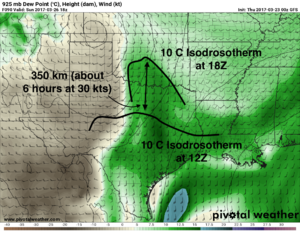Brian McKibben
EF3
Not sure if moisture will make it to KS but figured, I would include them just in case.
GFS and ECMWF have been consistent for several runs now showing a trough moving across the region on Sunday. One of the big limiting issues will be moisture.
Surface
Cyclogenesis begins overnight Saturday in SE Colorado and strengthens on Sunday as low moves into TX/OK panhandles. This allows winds to back to SSE east of the DL in the warm sector in OK and N TX. The warm front sets up in southern KS. Daytime highs look to be in the mid to upper 70s.
Friday's system pushes the 60° isodrosotherm all the way to the gulf coast where it stays until 06z sunday. Then rapid moisture advection brings mid 60 Tds to DFW and low 60s to KS/OK border by 00z Monday. It will be key to watch how far south the moisture goes with Friday's system.
The theta e tongue sets up along and east of I-35 from DFW to Wichita.
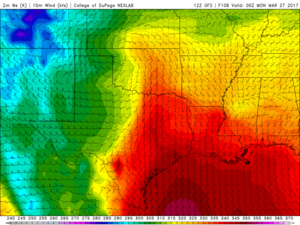
Upper Level:
Negatively titled 500 hPa trough moves across the region Sunday afternoon and evening. Looking at 50-60 knots from the SW.
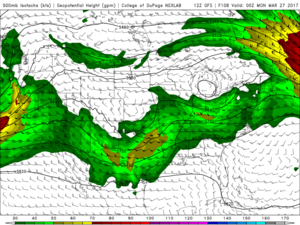
At 850 hPa, the warm sector is overspread with 40-50 kts from about 190°. Needless to say low level shear should be more than adequate for tornadoes. 0-1km helicity greater than 300 m2/s2 look likely. And at this time I don't see any problems with VBV wind profiles.
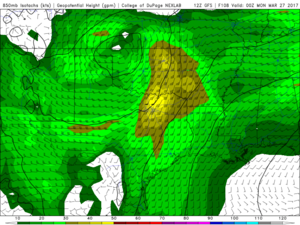
Conclusion:
Potential is there for some decent severe weather including tornadoes. The 500 hPa trough comes in right behind the friday trough so we have a short wavelength. This will potentially limit the available moisture. But with that said the friday system doesn't clear the Gulf and leaves the moisture on the coast. So confidence is medium that moisture will at least make it to north TX. Depending on surface temps and forcing I wonder if we will have any capping issues. Too far out to tell, but I will be keeping an eye on the models and the 12z NAM on Thur.
Special Treat:
Sounding for north Dallas
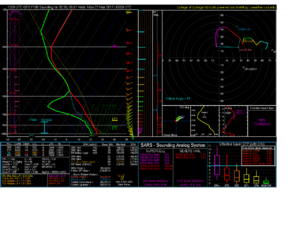
GFS and ECMWF have been consistent for several runs now showing a trough moving across the region on Sunday. One of the big limiting issues will be moisture.
Surface
Cyclogenesis begins overnight Saturday in SE Colorado and strengthens on Sunday as low moves into TX/OK panhandles. This allows winds to back to SSE east of the DL in the warm sector in OK and N TX. The warm front sets up in southern KS. Daytime highs look to be in the mid to upper 70s.
Friday's system pushes the 60° isodrosotherm all the way to the gulf coast where it stays until 06z sunday. Then rapid moisture advection brings mid 60 Tds to DFW and low 60s to KS/OK border by 00z Monday. It will be key to watch how far south the moisture goes with Friday's system.
The theta e tongue sets up along and east of I-35 from DFW to Wichita.

Upper Level:
Negatively titled 500 hPa trough moves across the region Sunday afternoon and evening. Looking at 50-60 knots from the SW.

At 850 hPa, the warm sector is overspread with 40-50 kts from about 190°. Needless to say low level shear should be more than adequate for tornadoes. 0-1km helicity greater than 300 m2/s2 look likely. And at this time I don't see any problems with VBV wind profiles.

Conclusion:
Potential is there for some decent severe weather including tornadoes. The 500 hPa trough comes in right behind the friday trough so we have a short wavelength. This will potentially limit the available moisture. But with that said the friday system doesn't clear the Gulf and leaves the moisture on the coast. So confidence is medium that moisture will at least make it to north TX. Depending on surface temps and forcing I wonder if we will have any capping issues. Too far out to tell, but I will be keeping an eye on the models and the 12z NAM on Thur.
Special Treat:
Sounding for north Dallas


